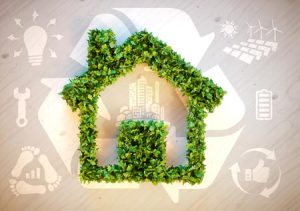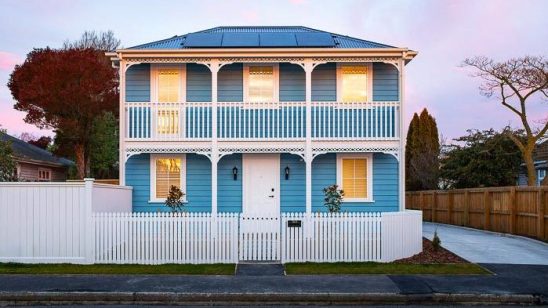
Plan for sustainability
When aiming for a sustainable build, planning is essential.
Work together with experienced architects and designers who share a passion for sustainability to ensure a smooth process and that no materials are wasted. When designing or renovating, consider adaptive reuse of existing structures. Transforming old buildings into new spaces may be more sustainable than starting from scratch.
Seek out salvaged materials where possible. At local salvage yards you’ll be able to find cabinets, doors, windows, plumbing fixtures, lighting, and flooring to incorporate in your build. Where you can’t find it salvaged, vote for a greener future with your wallet and seek out suppliers who prioritise the environment in their entire production cycle. Also ensure you choose building materials that are easily re-generated, such as bamboo. Consider avoiding these materials as much as possible: steel, aluminium, PVC, fiberglass insulation, treated wood, and glass.

When planning your build, also take time to consider renewable energy. Incorporate energy sources such as solar power, and use passive design strategies. Explore the possibility of incorporating green roofs, which involve growing vegetation atop your building. Green roofs contribute to insulation, absorb rainwater, provide additional green spaces, and as a bonus make for an eye-catching feature.
Design your landscaping with native, drought-resistant plants. Local flora requires less water, enhances biodiversity, and supports the natural ecosystem.
Conserve water by using low-flow bathroom fixtures and dual flush toilets.
Install energy-efficient windows with double glazing to enhance insulation, reduce heat transfer, and minimise the need for artificial heating or cooling.
Invest in smart home systems that enable energy monitoring and management. This includes programmable thermostats, smart lighting, and energy-efficient home automation systems.
For the furnishings of your home, seriously consider natural fibres. Great for environment, their subtle neutral colours mean your house will be a relaxing space, no matter the current trends. Think wool carpets, rugs, and blankets, complemented by rattan and wicker chairs and shelves.
Use linen for curtains and bedding. Linen doesn’t only have a core sustainable aspect, it provides excellent cooling when sleeping.
An alternative to consider is opting for a prefabricated home, the fast construction of which will save time and material waste. With some careful planning, a simple goal, and these tips, you’ll be right on track to create the most sustainable home on the block, and to inspire others to do the same.



